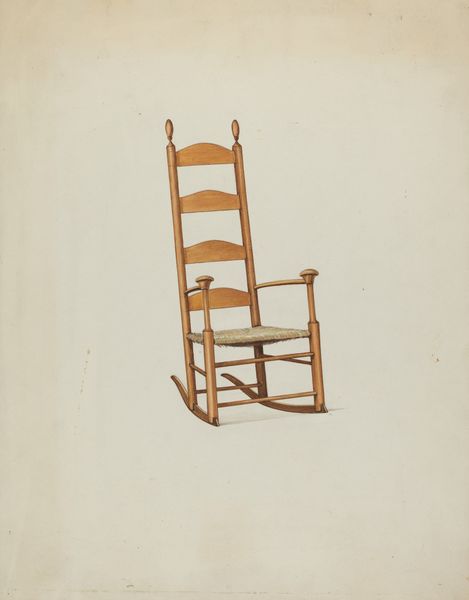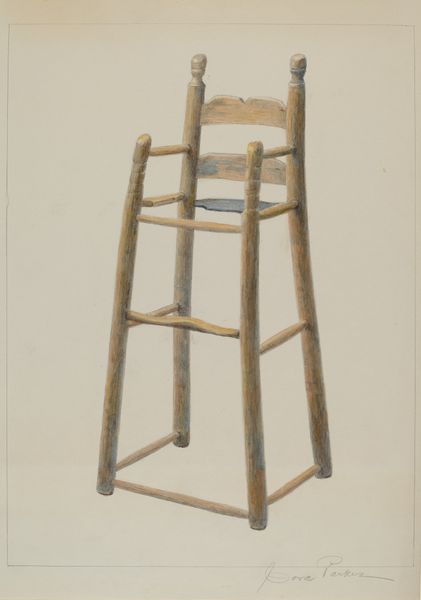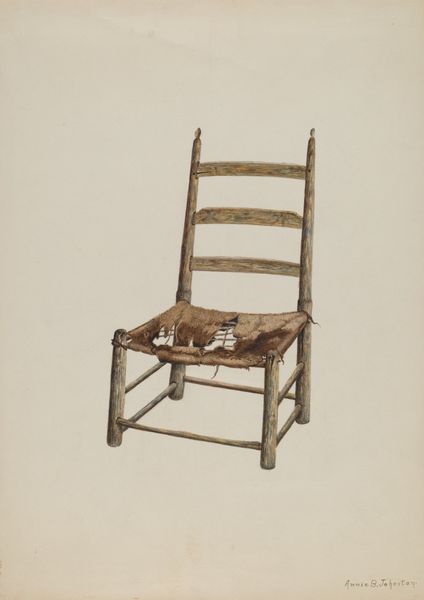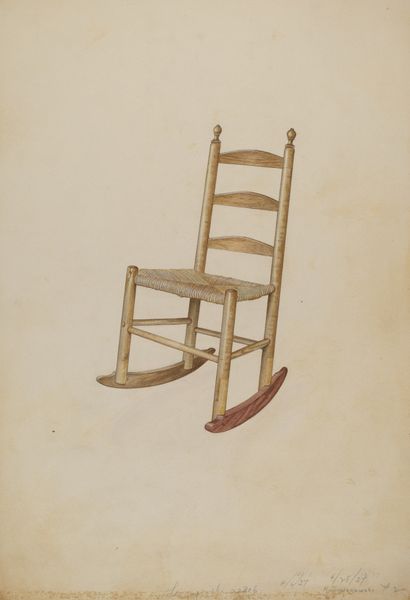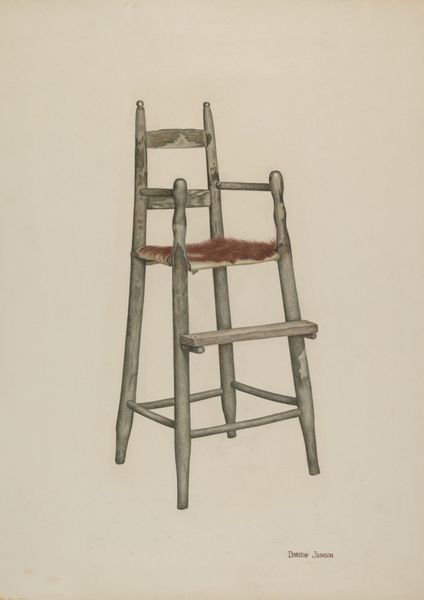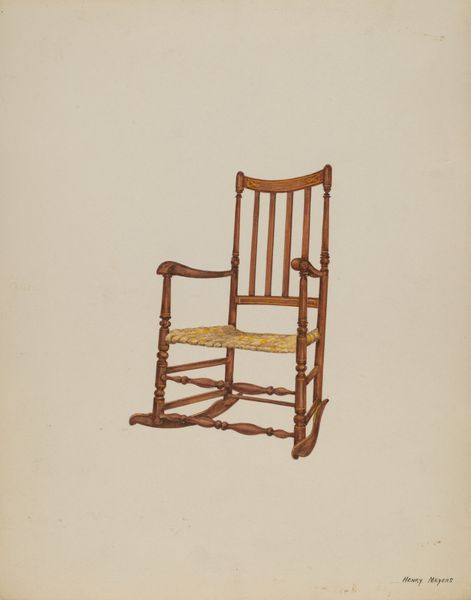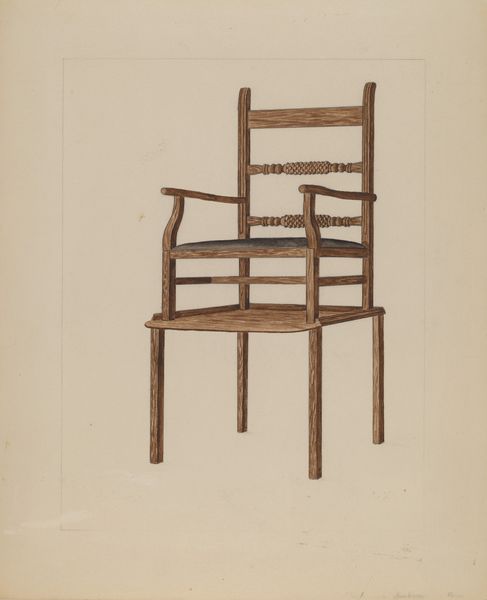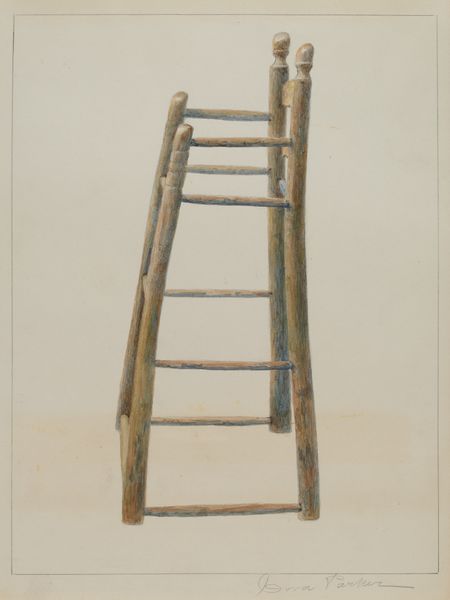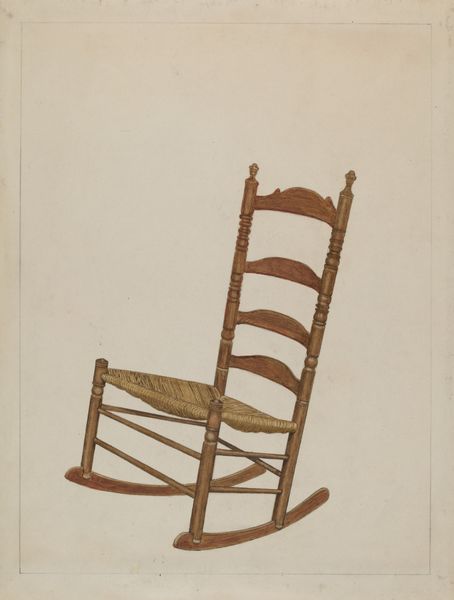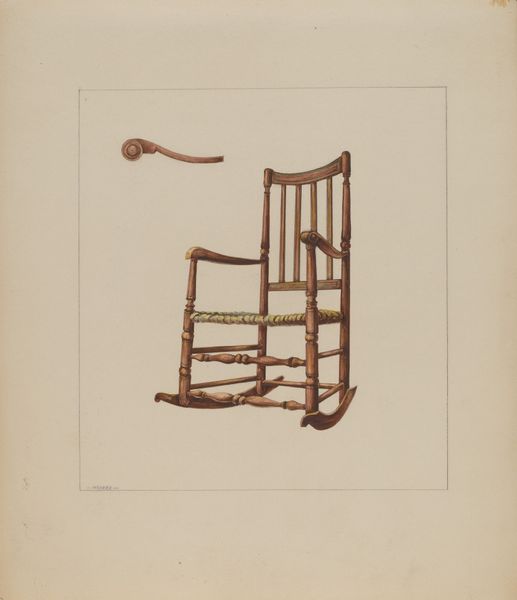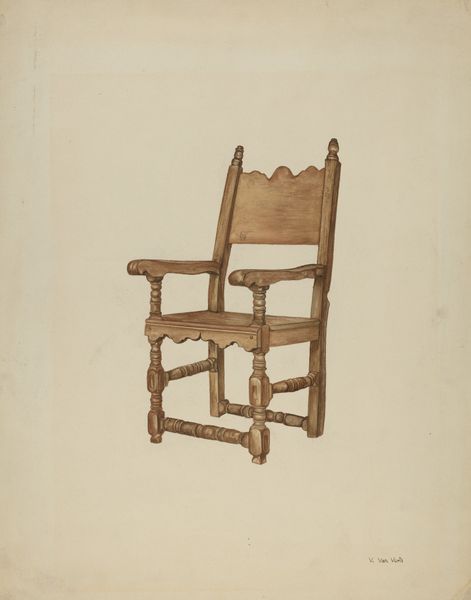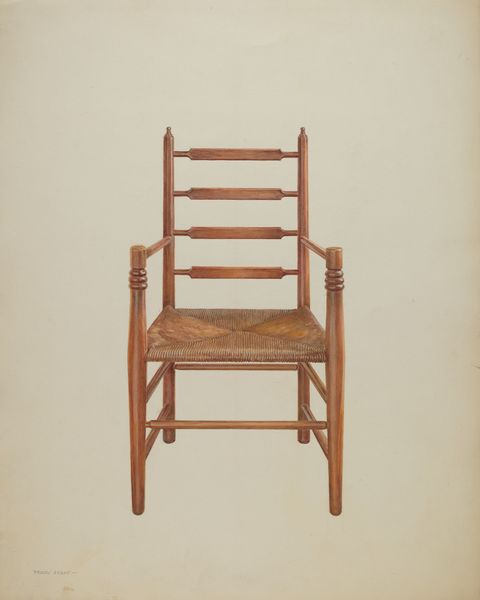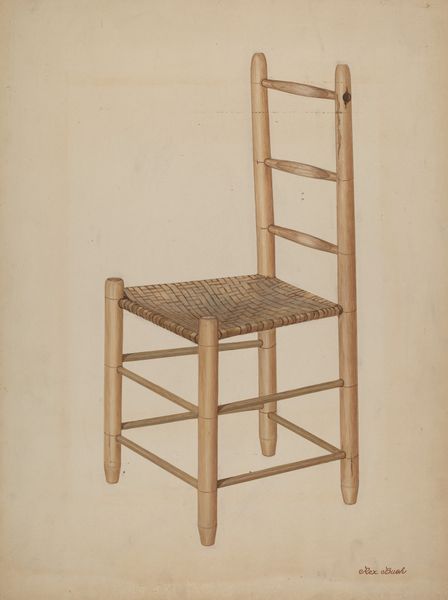
drawing, watercolor
#
drawing
#
watercolor
#
folk-art
#
watercolour illustration
Dimensions: overall: 34.9 x 24.4 cm (13 3/4 x 9 5/8 in.) Original IAD Object: 34"high; 11 1/4 x 12 inch seat.
Copyright: National Gallery of Art: CC0 1.0
Curator: Here we have Annie B. Johnston's watercolor and drawing piece, "Child's High Chair," circa 1939. What strikes you first about it? Editor: It's surprisingly somber. Even though it's a child's object, it evokes a sense of bygone eras, like a relic. Is it the starkness of the piece, or is that chair just that old? Curator: I find myself focused on the high chair itself, and what it's made from. The materials seem deliberately chosen. It appears handcrafted from roughly hewn wood, rather rudimentary; the chair itself would've been accessible even during times of relative austerity. Editor: Absolutely. I think the imagery taps into cultural ideas surrounding childhood—protection, growth. Notice how high the chair seems? Like placing the child above others in order to protect them. And the wooden bars give an implicit suggestion of security but also confinement. Curator: I agree, though I also think about the maker. Building this piece requires certain labor and resources. Its rough appearance doesn't mean lack of artistry; instead, maybe practicality born from circumstance? The craft indicates value regardless of monetary measure. Someone expended resources, skills, and labor on this single object for use. Editor: That's fascinating to think about. It shows how universal child-rearing and the desire to provide and keep one's children healthy and safe transcends time. Curator: Precisely. The worn appearance and somewhat primitive construction speak volumes about available resources, emphasizing use and practicality over ornate display. What appear now to be defects, such as exposed construction points on the legs, might reflect not lack of ability, but necessity born of circumstances, possibly an attempt to keep production costs low. Editor: Right, but there’s also that tension: a parent provides comfort with available materials and an awareness of the fragility of the human experience that such objects acquire by witnessing different moments in history and perhaps several generations using this particular seat. Curator: A fascinating look at family. The image may represent the physical necessities and their deeper resonance—material evidence of care within limiting environments. Editor: Agreed, prompting reflections on family, protection, and simple design.
Comments
No comments
Be the first to comment and join the conversation on the ultimate creative platform.
